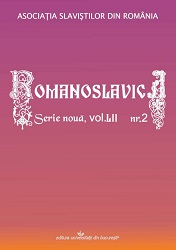Čitati s druge strane – o strategijama čitanja govornika arapskoga na hrvatskome kao stranome jeziku
Reading on the other hand ‒ About strategies for reading by native speaker of Arabic language in Croatian as a foreign language
Author(s): Aida KorajacSubject(s): Education, Foreign languages learning, Language acquisition, South Slavic Languages
Published by: Editura Universităţii din Bucureşti
Keywords: reading in Croatian as L2; strategies of reading; case study; verbal protocols; constructively-responsive reading;
Summary/Abstract: Understanding the process of reading is important to an understanding of the nature of reading, but at the same time it is evidently a difficult thing to do. The process is normally silent, internal, private (Alderson: 2000). This paper will deal with a process of reading by native speaker of Arabic language in Croatian as a foreign language. Research is based on a case study. Participant is attending Language exercises in Croatian as a second and foreign language 1 (A2+ level according to CEFR) in Croaticum – Centre for Croatian as Foreign and Second Language. Although Croatian and Arabic languages are written in alphabetical letters (as opposed to logographic or syllabic letters), they differ in orthography and it is assumed that because of different alphabets readers have different ways of visual processing, and ultimately an understanding of the text (Šamo: 2014). The aim of this study is to find out which strategies speaker of Arabic is using in the understanding of a text in the Croatian language. The study is based on the model of constructively-responsive reading (Pressley i Afflerbach 1995, in: Šamo 2014: 67). Data from verbal protocols are analyzed by qualitative method.
Journal: Romanoslavica
- Issue Year: LII/2016
- Issue No: 2
- Page Range: 189-203
- Page Count: 15
- Language: Croatian

